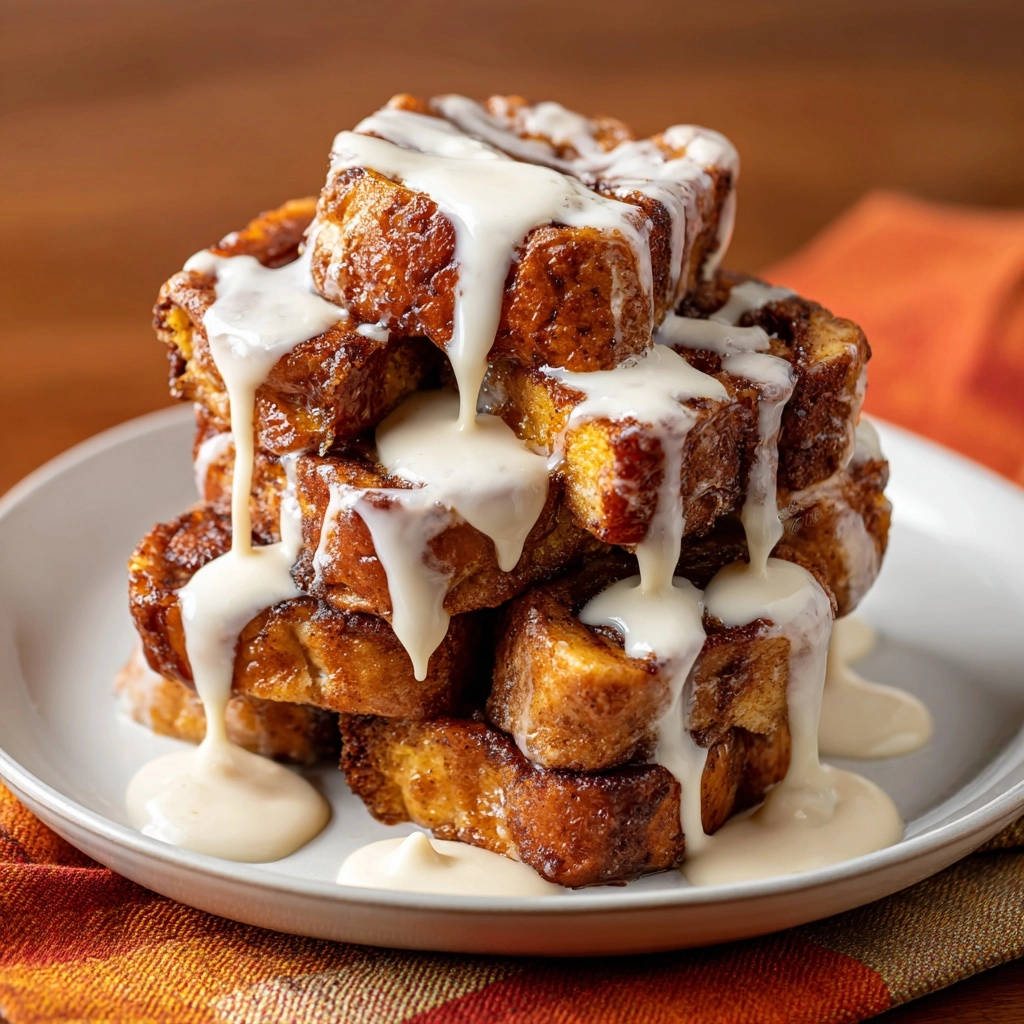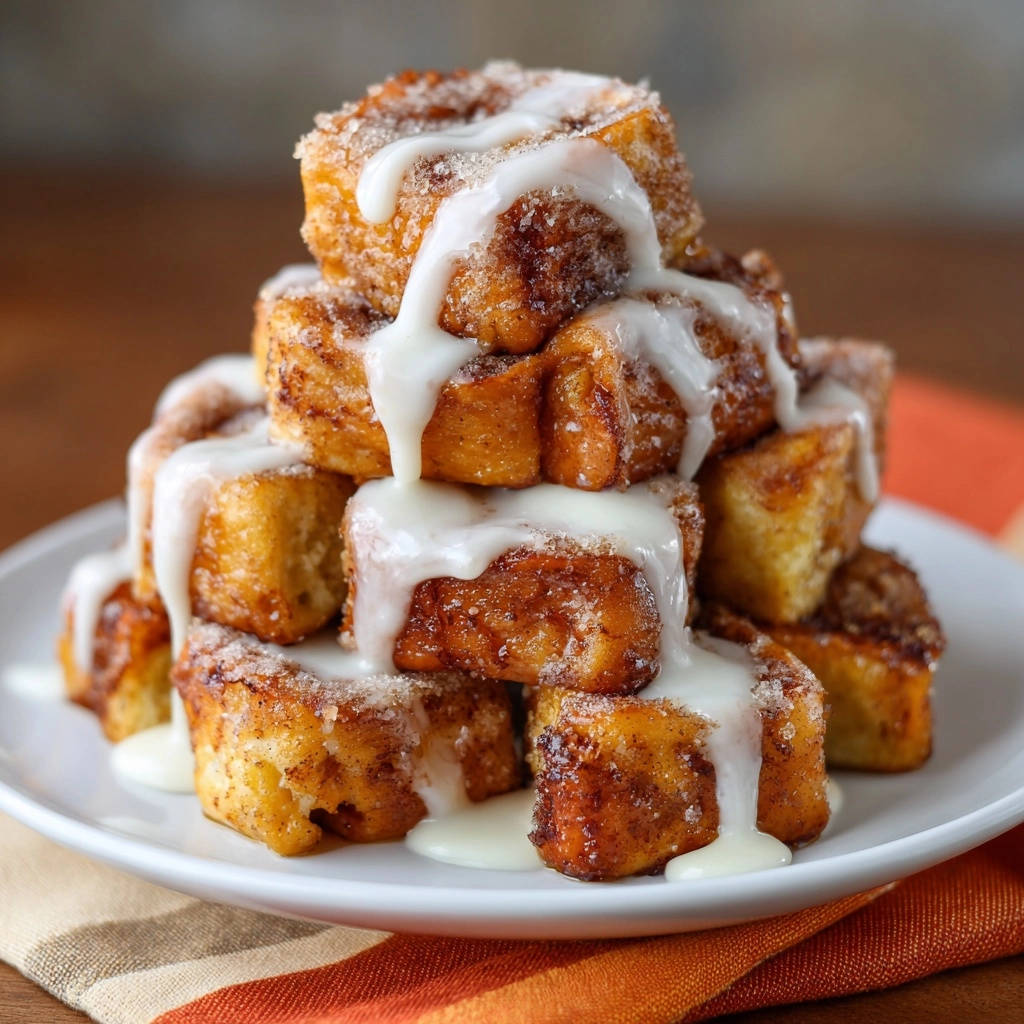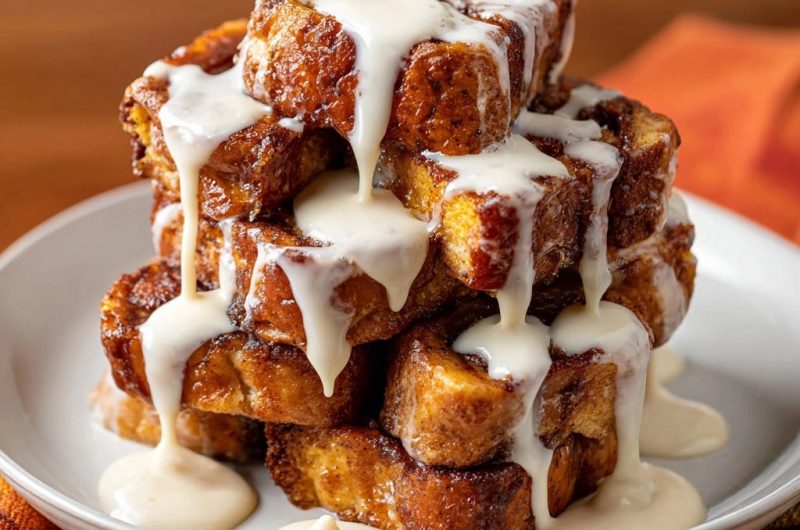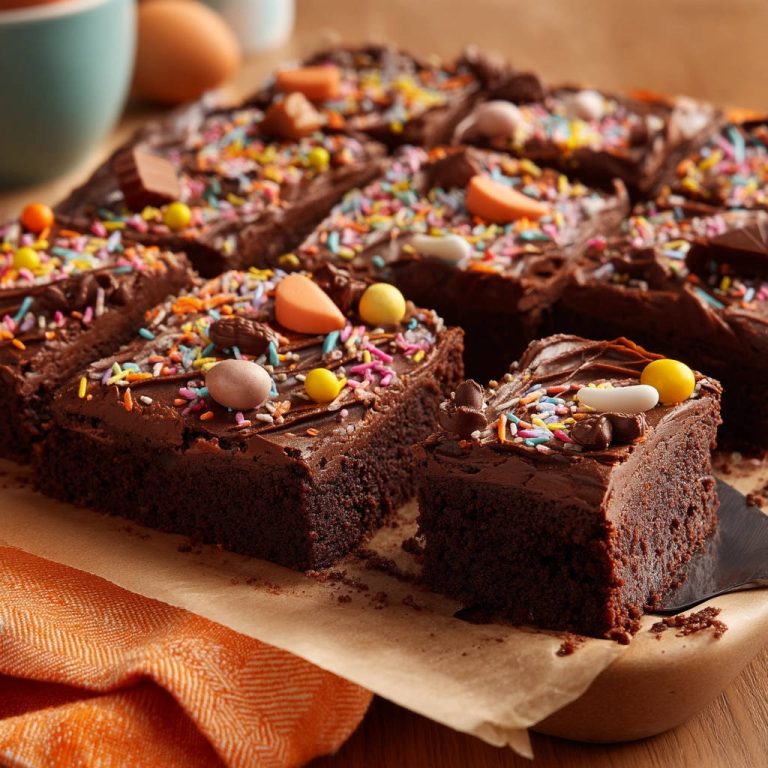If you’ve ever hoped for a soft, custardy French toast bake only to find it unexpectedly dry, you understand the frustration. After extensive testing, I’ve perfected this Easy Overnight French Toast Bake, ensuring every bite is moist and tender.
This recipe transforms your morning, allowing you to wake up to a luxurious breakfast that’s already mostly prepared, delivering consistent, melt-in-your-mouth results every time.
The Easy Overnight French Toast Bake Secret: Unlocking Unrivaled Moisture
Achieving that perfectly soft, custardy interior in a French toast bake isn’t just about the ingredients; it’s about the method. This recipe utilizes key techniques to ensure your breakfast casserole is never dry.
More Than Just Overnight: The Power of a Deep Soak
The extended refrigeration time is the cornerstone of this recipe’s success. It allows the bread cubes to fully absorb the rich egg custard, transforming them into a velvety texture that bakes up incredibly moist.
This deep soak ensures no dry pockets remain, delivering a consistently tender experience throughout the entire dish. It’s truly what sets this overnight French toast apart.
The “Press Down” Method: Why Every Bite Stays Tender
A simple, yet powerful technique, gently pressing the bread into the custard before chilling ensures maximum saturation. This prevents any pieces from floating to the top and drying out during baking.
Every single cube becomes infused with flavor and moisture, guaranteeing a uniformly delicious outcome. It’s a small step that makes a monumental difference in texture.
Covered Baking: Your Path to a Perfectly Steamed Interior
Baking the dish initially covered with foil creates a steamy environment in the oven. This traps moisture, allowing the casserole to cook through gently without losing its tenderness.
It’s a crucial trick for preventing the exterior from crisping too quickly while the interior remains undercooked or dry. This method results in a beautifully cooked breakfast casserole every time.
Effortless Elegance: Wake Up to a Ready-to-Bake Breakfast
The beauty of this Easy Overnight French Toast Bake lies in its make-ahead convenience. All the prep is done the night before, saving you precious morning time.
Imagine waking up, sliding a prepared dish into the oven, and minutes later enjoying a gourmet breakfast with minimal fuss. It’s perfect for holidays, entertaining, or simply enjoying a relaxed weekend.
The Essential Elements: Building Your Easy Overnight French Toast Bake
Every ingredient plays a vital role in crafting this delightful breakfast casserole. Selecting the right components ensures the perfect texture and flavor.
Choosing Your Bread: The Foundation of Texture
Challah or brioche bread are ideal choices for this baked French toast. Their rich, slightly sweet flavor and sturdy crumb hold up exceptionally well to prolonged soaking.
They absorb the custard without becoming overly mushy, resulting in that sought-after custardy French toast texture. If you can’t find them, a good quality, slightly stale white bread or Texas toast can also work in a pinch.
Crafting the Custard: The Heart of the Bake
The eggs, whole milk, granulated sugar, vanilla extract, cinnamon, and nutmeg combine to form the rich, aromatic custard. Eggs provide the structure and richness, while whole milk ensures creamy indulgence.
Sugar sweetens and caramelizes, vanilla adds warmth, and cinnamon and nutmeg infuse the bake with classic French toast spice. These ingredients are precisely balanced for optimal absorption and flavor.
The Dazzling Drizzle: Elevating Your Presentation
The simple powdered sugar glaze adds a beautiful finish and an extra touch of sweetness. Whisking powdered sugar with milk or cream and a hint of vanilla creates a smooth, pourable topping.
This light drizzle melts slightly into the warm bake, enhancing its appeal without overpowering the flavors of the custardy French toast itself. It’s a simple step that transforms your presentation.
Beyond the Ingredients: Essential Tools for French Toast Bake Success
Having the right kitchen tools makes the preparation of this delicious overnight French toast bake even easier and more efficient.
The Right Baking Dish for Even Cooking
A 9×13 inch baking dish is essential for this recipe. Its size allows the bread to spread out evenly, promoting consistent baking and preventing overcrowding.
Glass or ceramic dishes are excellent as they retain heat well, ensuring a uniformly cooked interior and a beautifully browned top.
Whisks and Bowls: Mixing for Perfection
You’ll need a large mixing bowl for whisking the custard and coating the bread cubes. A sturdy whisk ensures your custard is smooth and lump-free, crucial for even absorption.
These basic tools are fundamental for combining ingredients thoroughly and efficiently, setting the stage for a perfect bake.
Measuring for Accuracy: Spoons and Cups
Precise measurements are key to consistent results, especially when balancing liquids and dry ingredients for the custard. Standard measuring cups and spoons ensure accuracy.
Following the recipe’s exact quantities prevents the bake from being too dry or too soggy, guaranteeing a reliable and delicious outcome every time you prepare this Easy Overnight French Toast Bake.
Your Step-by-Step Guide to a Flawless Easy Overnight French Toast Bake
- Prepare Your Dish:
Generously grease your 9×13 inch baking dish with melted butter. This crucial step ensures easy release and prevents sticking, especially after the overnight chill.
- Whisk the Custard:
In a large bowl, combine the eggs, whole milk, granulated sugar, vanilla extract, cinnamon, and nutmeg. Whisk until the mixture is completely smooth and well-integrated, ensuring no lumps of sugar remain.
- Coat the Bread:
Add the cubed challah or brioche bread to the custard mixture. Gently toss to ensure every piece of bread is thoroughly coated. For optimal moisture, use a spoon or spatula to press the bread cubes down, submerging them fully into the liquid. This prevents any dry spots in the final bake.
- Chill for Perfection:
Transfer the coated bread mixture into your prepared baking dish, spreading it out evenly. Cover the dish tightly with plastic wrap and refrigerate for a minimum of 8 hours, or ideally, overnight. This extended soak is the cornerstone of achieving that melt-in-your-mouth, never-dry texture.
- Preheat and Acclimatize:
The next morning, preheat your oven to 375°F (190°C). While the oven heats, remove the French toast bake from the refrigerator and let it sit at room temperature for about 15 minutes. This slight acclimatization helps ensure even baking.
- Initial Covered Bake:
Cover the baking dish tightly with aluminum foil. Bake for 30 minutes. Baking covered helps to steam the casserole, which is key for a moist interior that cooks through without drying out.
- Uncover and Golden Finish:
Remove the foil and continue to bake for an additional 10-15 minutes, or until the top turns a beautiful golden brown and the center is set. You can test for doneness by inserting a knife into the center; it should come out clean.
- Prepare the Glaze:
While the French toast bake is cooling slightly, whisk together the powdered sugar, milk or cream, and vanilla extract in a small bowl until smooth. Adjust the consistency by adding a tiny bit more milk if you prefer a thinner glaze.
- Drizzle and Serve:
Generously drizzle the prepared glaze over the warm French toast bake. Slice and serve immediately to enjoy your perfectly moist and utterly delicious breakfast!
Evening Prep: Assembling Your Bake for the Soak
The Critical Overnight Chill: Maximizing Absorption
Morning Magic: From Refrigerator to Oven
Glaze and Garnish: The Finishing Touches
Mastering Your Easy Overnight French Toast Bake: Expert Tips & Tricks
Elevate your breakfast casserole game with these insider tips, ensuring every batch of your Overnight French Toast Bake is nothing short of perfection.
Don’t Underestimate the Soak Time
The minimum 8-hour soak time isn’t a suggestion; it’s the secret to its success. This extended period allows the bread to fully absorb the custard, preventing any dry spots and yielding a truly custardy French toast.
Pressing Down: A Small Step, A Big Difference
The act of pressing the bread into the custard may seem minor, but it’s crucial. This ensures every piece is submerged and absorbs the liquid, guaranteeing uniform moisture throughout the baked French toast.
The Covered Baking Technique: Why It Matters
Baking covered for the first 30 minutes prevents the top from browning too quickly and steaming the interior. This method locks in moisture, resulting in a tender, moist interior that cooks evenly.
Achieving the Perfect Golden Crust
After baking covered, removing the foil allows the top to achieve a beautiful golden brown. Keep an eye on it during this final uncovered phase to prevent overbrowning while the center sets.
Customizing Your Flavors
Feel free to experiment with the custard by adding a pinch of cardamon, a dash of almond extract, or the zest of an orange. These small additions can introduce new dimensions to your sweet brunch recipe.
Warm vs. Room Temperature Glaze
Drizzling the glaze over a warm, but not piping hot, French toast bake allows it to melt slightly, creating a beautiful, cohesive finish. If the bake is too hot, the glaze might become too watery.
Troubleshooting Your Overnight French Toast Bake: Common Hiccups Solved
Even seasoned home cooks encounter challenges. Here are solutions to common issues you might face when making this Easy Overnight French Toast Bake.
Why Is My French Toast Bake Dry?
A dry French toast bake usually means insufficient soaking time or not enough liquid. Ensure your bread cubes are completely submerged in the custard for at least 8 hours, and gently press them down to aid absorption.
Overbaking can also lead to dryness. Always check for doneness with a knife inserted into the center, and remove promptly when it comes out clean.
Help, It’s Soggy!
If your bake is overly wet or dense, it could be due to too much liquid for the amount of bread, or not draining excess liquid if your bread wasn’t sturdy enough. Ensure you’re using a dense, absorbent bread like challah or brioche.
Also, ensure the bake cooks through completely; a knife inserted into the center should come out clean, indicating the custard has fully set.
The Top is Burning Before It’s Cooked Through!
This often happens if the oven temperature is too high, or if the foil is removed too soon. Ensure your oven temperature is accurate and that the initial covered baking time is sufficient.
If the top browns quickly once uncovered, you can loosely tent it with foil again for the remaining baking time to prevent further burning while the interior finishes cooking.
Serving Suggestions, Storage, and Make-Ahead Magic
Once your delightful Easy Overnight French Toast Bake is ready, knowing how to serve and store it properly ensures maximum enjoyment and convenience.
Beyond Syrup: Creative Serving Ideas
While maple syrup is a classic, consider topping your breakfast casserole with a dusting of powdered sugar, fresh berries, or a dollop of whipped cream. For an even brighter flavor, a vibrant fresh fruit salsa makes an excellent accompaniment.
Serving it alongside crispy bacon or breakfast sausage creates a complete and satisfying brunch spread. A side of Greek yogurt adds a lovely tangy contrast.
Storing Leftovers for Maximum Freshness
Leftover French toast bake can be stored in an airtight container in the refrigerator for up to 3-4 days. This ensures it retains its moisture and flavor for future enjoyment.
Can You Freeze This French Toast Bake?
Yes, this breakfast casserole freezes beautifully! Once completely cooled, slice the bake into individual portions. Wrap each slice tightly in plastic wrap, then aluminum foil, and store in a freezer-safe bag or container.
It can be frozen for up to 2-3 months. Reheat individual portions in the microwave, toaster oven, or conventional oven until warmed through.
Batch Cooking for Busy Mornings
The make-ahead nature of this recipe makes it perfect for meal prepping. Consider making a double batch to enjoy throughout the week or to have on hand for unexpected guests.
Simply assemble in two separate baking dishes and follow the chilling and baking instructions. This is a truly efficient sweet brunch recipe.
Your Top Questions About Easy Overnight French Toast Bake Answered
Here are answers to some of the most common inquiries about mastering this delightful overnight French toast recipe.
What’s the best bread for French Toast Bake?
Challah or brioche bread are highly recommended due to their rich flavor, tender crumb, and ability to absorb the custard without becoming soggy. They hold their structure perfectly through the long soak.
Can I make this French toast bake dairy-free or gluten-free?
For a dairy-free version, substitute whole milk with a rich plant-based milk like full-fat oat milk or almond milk. For gluten-free, ensure you use a dense, gluten-free bread specifically designed for French toast, as some can become overly mushy.
How long can I soak the French toast bake?
While 8 hours is the minimum, soaking overnight (up to 12-18 hours) is ideal for the best texture. Any longer than 24 hours might risk the bread breaking down too much.
Can I bake it immediately instead of overnight?
Technically, yes, but it won’t yield the same incredibly custardy, never-dry texture. The overnight soak is crucial for the bread to fully absorb the liquid, creating a superior result. Baking immediately risks a drier interior.
How do I reheat French toast bake?
To reheat, cover individual slices or the whole bake with foil and warm in a preheated oven at 300°F (150°C) until heated through, about 15-20 minutes for slices. You can also microwave individual portions.
Can I add fruit or nuts to the bake?
Absolutely! Berries (blueberries, raspberries), sliced peaches, or chopped apples can be folded into the bread mixture. Toasted pecans or walnuts can also be added for crunch. For similar concepts with fruit and nuts, explore our apple walnut baked oatmeal cups recipe.
Ready to Delight? Share Your Easy Overnight French Toast Bake Masterpiece!
Now that you have all the secrets to a perfectly moist and utterly divine Easy Overnight French Toast Bake, it’s time to create your own morning masterpiece. This make-ahead breakfast is truly a game-changer.
Go ahead, impress your family and friends, or simply treat yourself to a stress-free, luxurious start to your day. We’d love to hear about your experience!
Easy Overnight French Toast Bake
Course: BreakfastCuisine: American CuisineDifficulty: easy6
servings20
minutes40
minutes60
minutesAmerican Cuisine
Ingredients
1 loaf (1 pound) challah or brioche bread, cut into 1-inch cubes
6 large eggs
2 cups whole milk
1/2 cup granulated sugar
1 tablespoon vanilla extract
1 teaspoon ground cinnamon
1/4 teaspoon ground nutmeg
2 tablespoons unsalted butter, melted (for greasing dish)
For the Glaze:
1 cup powdered sugar
2-3 tablespoons milk or cream
1/2 teaspoon vanilla extract
Directions
- Grease a 9×13 inch baking dish generously with the melted butter.
- In a large bowl, whisk together the eggs, whole milk, granulated sugar, vanilla extract, cinnamon, and nutmeg until well combined and smooth.
- Add the bread cubes to the egg mixture. Gently toss to coat all the bread evenly. Now, here’s a crucial step for moistness: use a spoon or spatula to gently press the bread cubes down into the custard, ensuring they are fully submerged and can really soak up the liquid. This prevents dry spots later.
- Transfer the bread mixture into the prepared baking dish, spreading it out evenly.
- Cover the dish tightly with plastic wrap and refrigerate for at least 8 hours, or preferably overnight. This extended soak time is key! It allows the bread to fully absorb the rich custard, creating that melt-in-your-mouth, never-dry texture that everyone loves.
- The next morning, preheat your oven to 375°F (190°C). Remove the dish from the refrigerator and let it sit at room temperature for about 15 minutes while the oven preheats.
- Bake the French toast bake, covered with aluminum foil, for 30 minutes. Baking covered helps to steam the casserole, ensuring the interior cooks through and stays incredibly moist without drying out.
- Remove the foil and continue to bake for an additional 10-15 minutes, or until the top is golden brown and the center is set (a knife inserted into the center should come out clean).
- While the bake is cooling slightly, prepare the glaze: In a small bowl, whisk together the powdered sugar, milk or cream, and vanilla extract until smooth. Add more milk, a tiny bit at a time, if you prefer a thinner glaze.
- Drizzle the glaze generously over the warm French toast bake before serving. Enjoy your perfectly moist and delicious breakfast!
Notes
- The overnight soak and covering the bake during cooking are key to achieving a consistently moist and tender French toast.









